3.1
Intersections: Photography and Digital, Photography and Computers
Wishing Wells

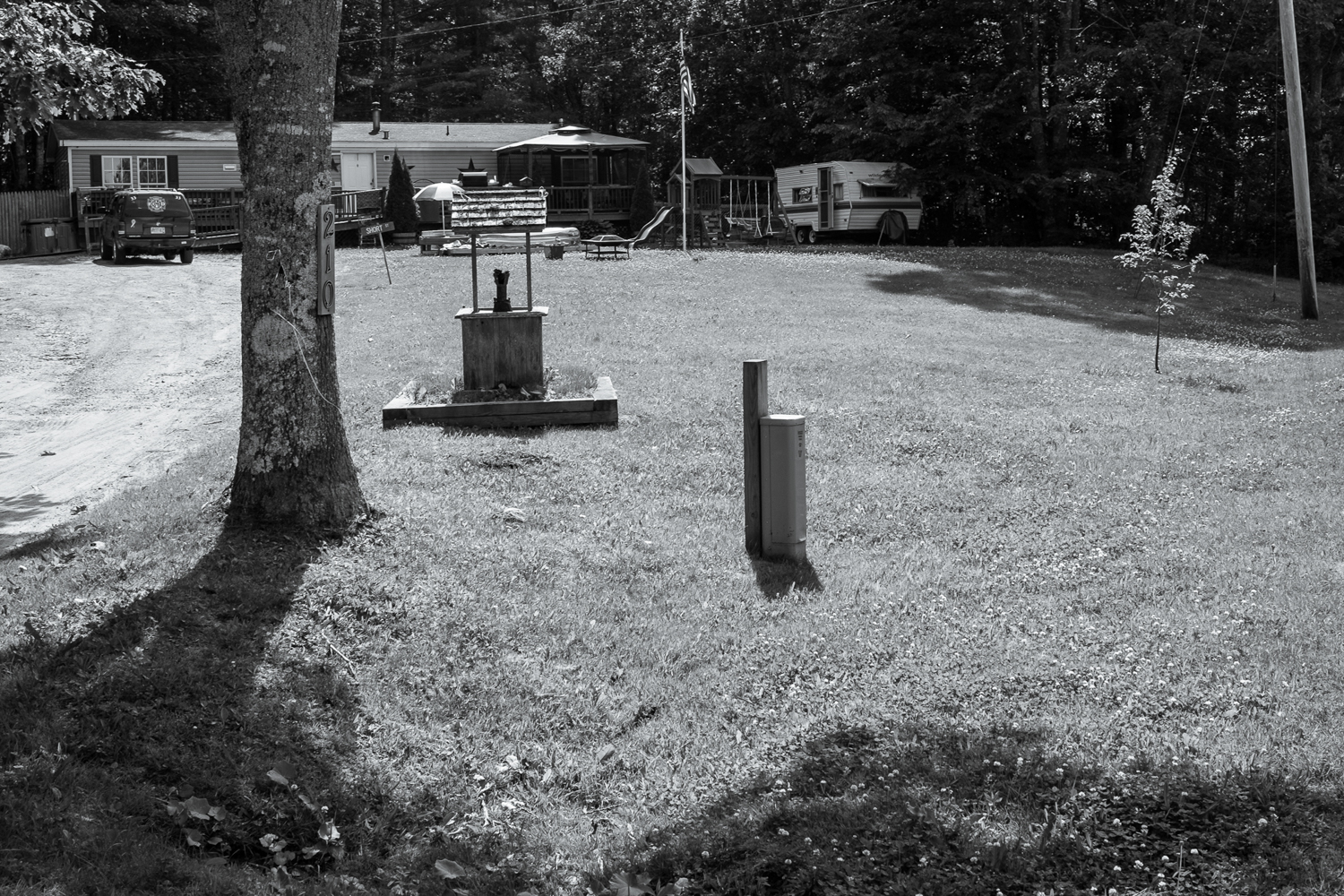

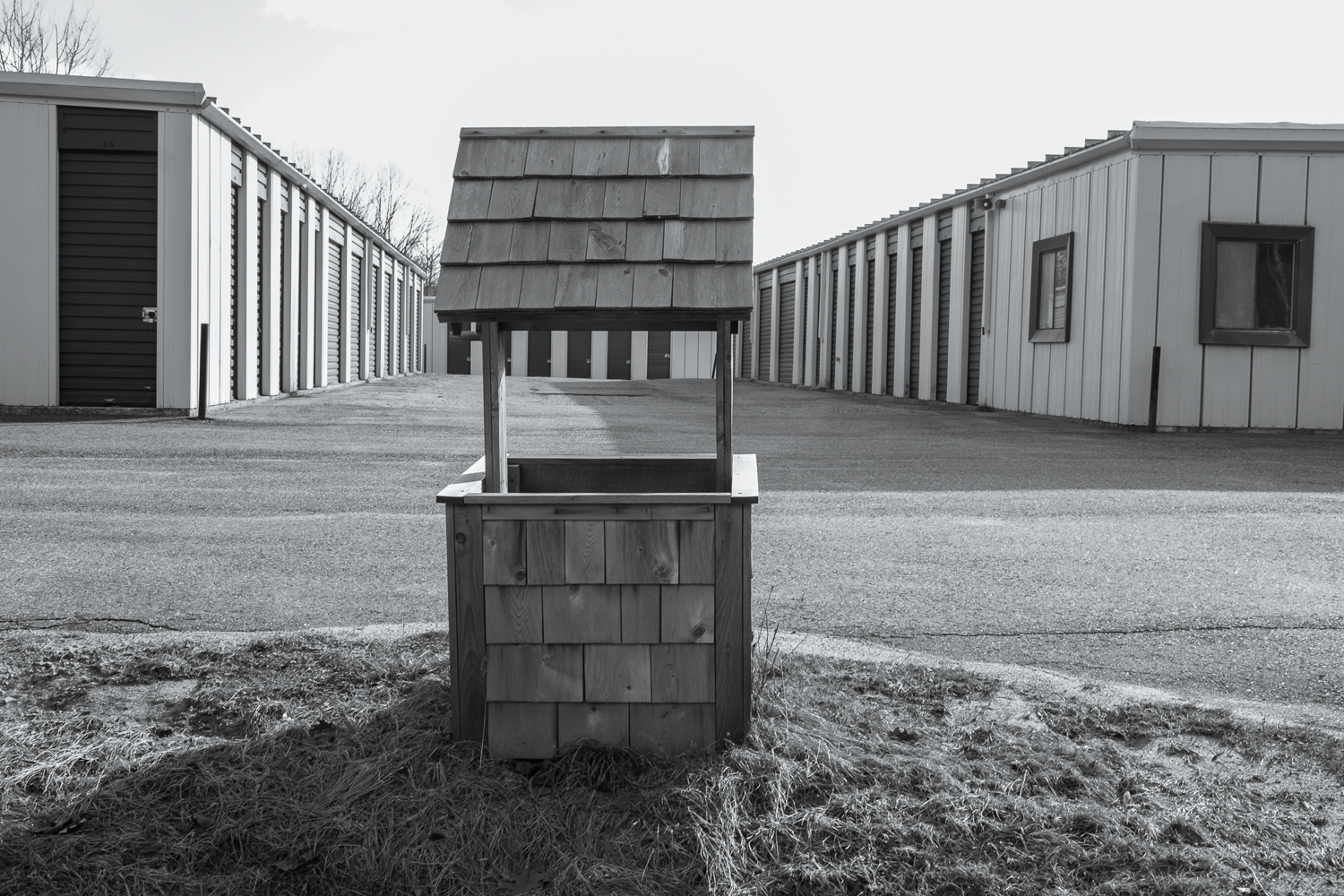
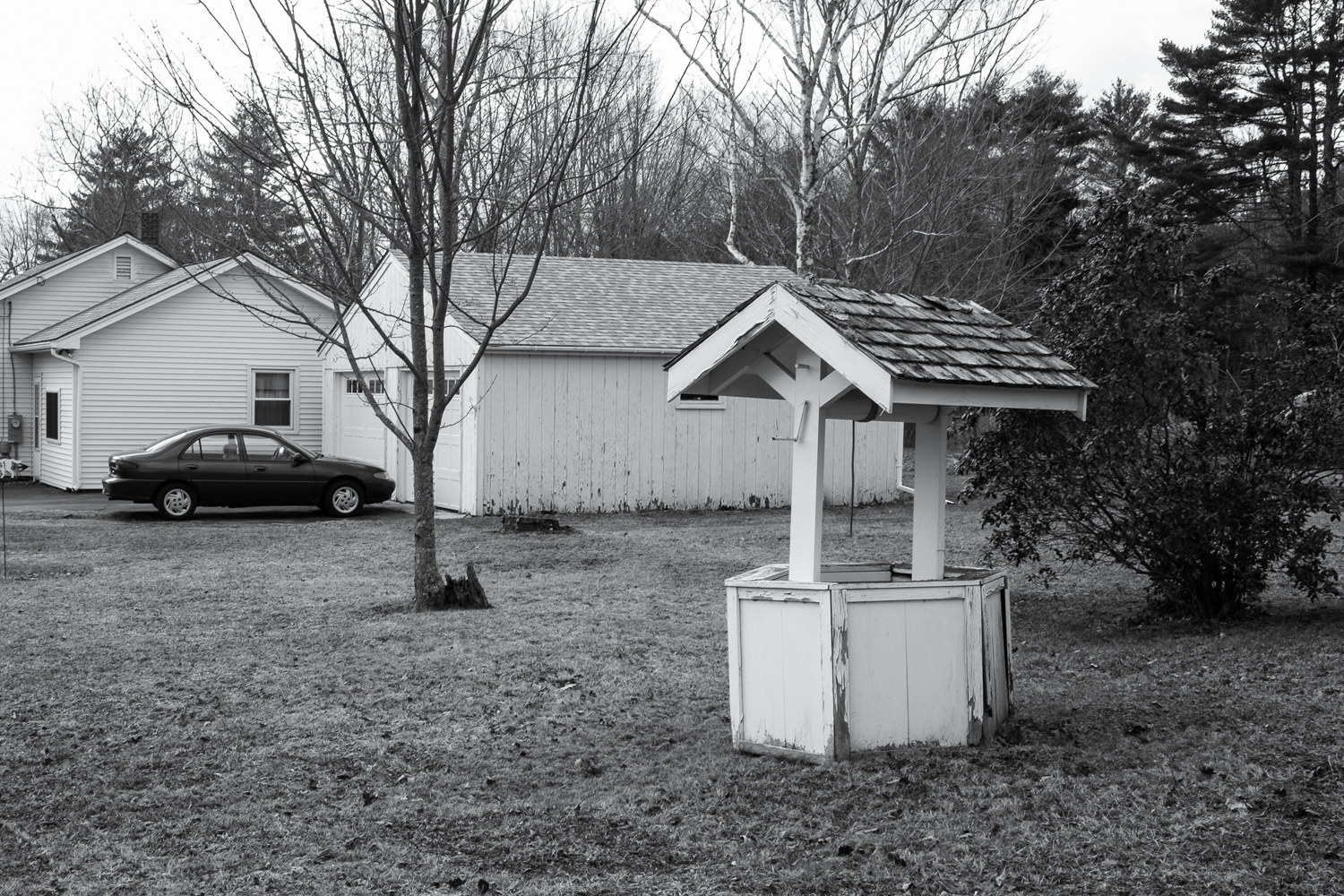

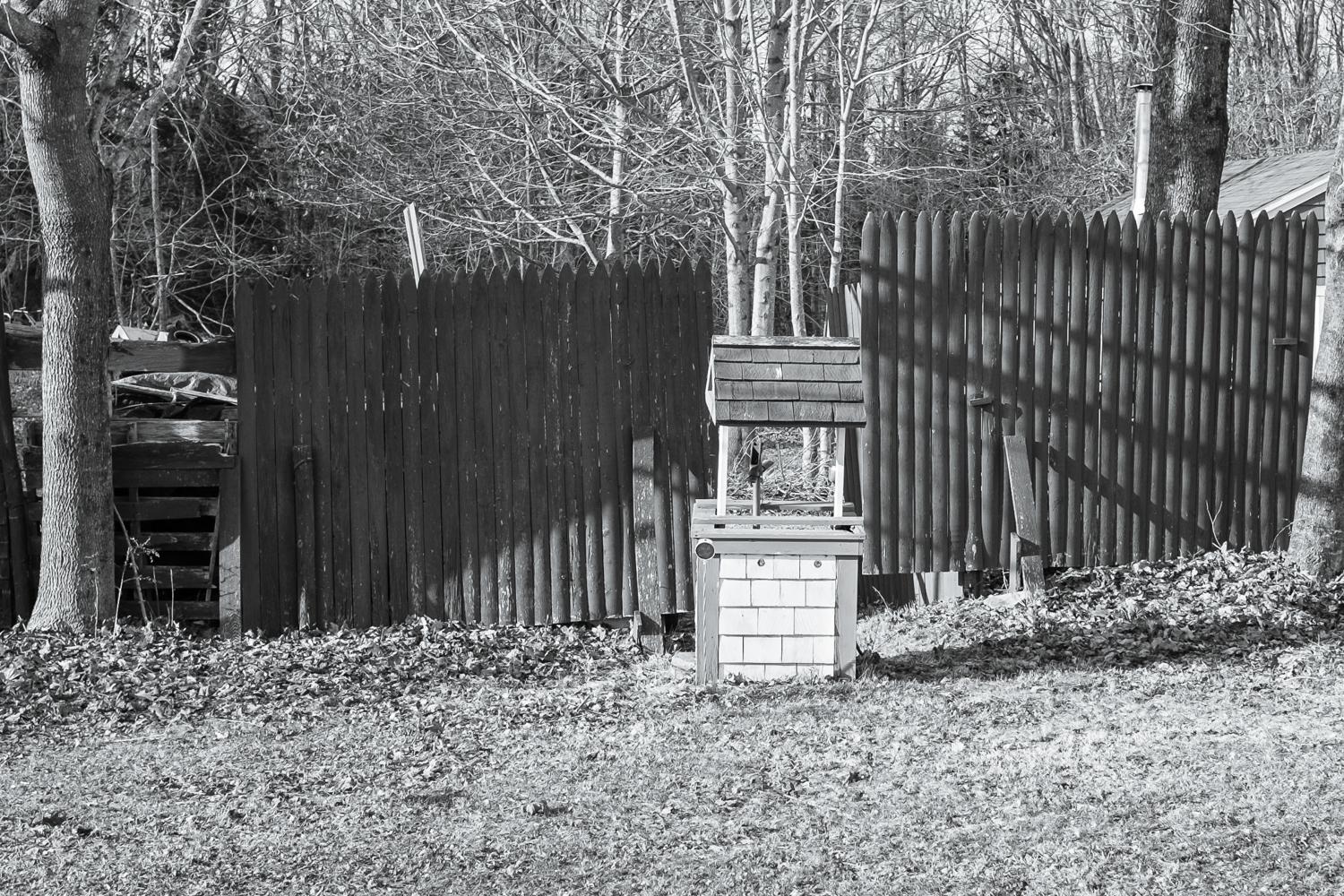


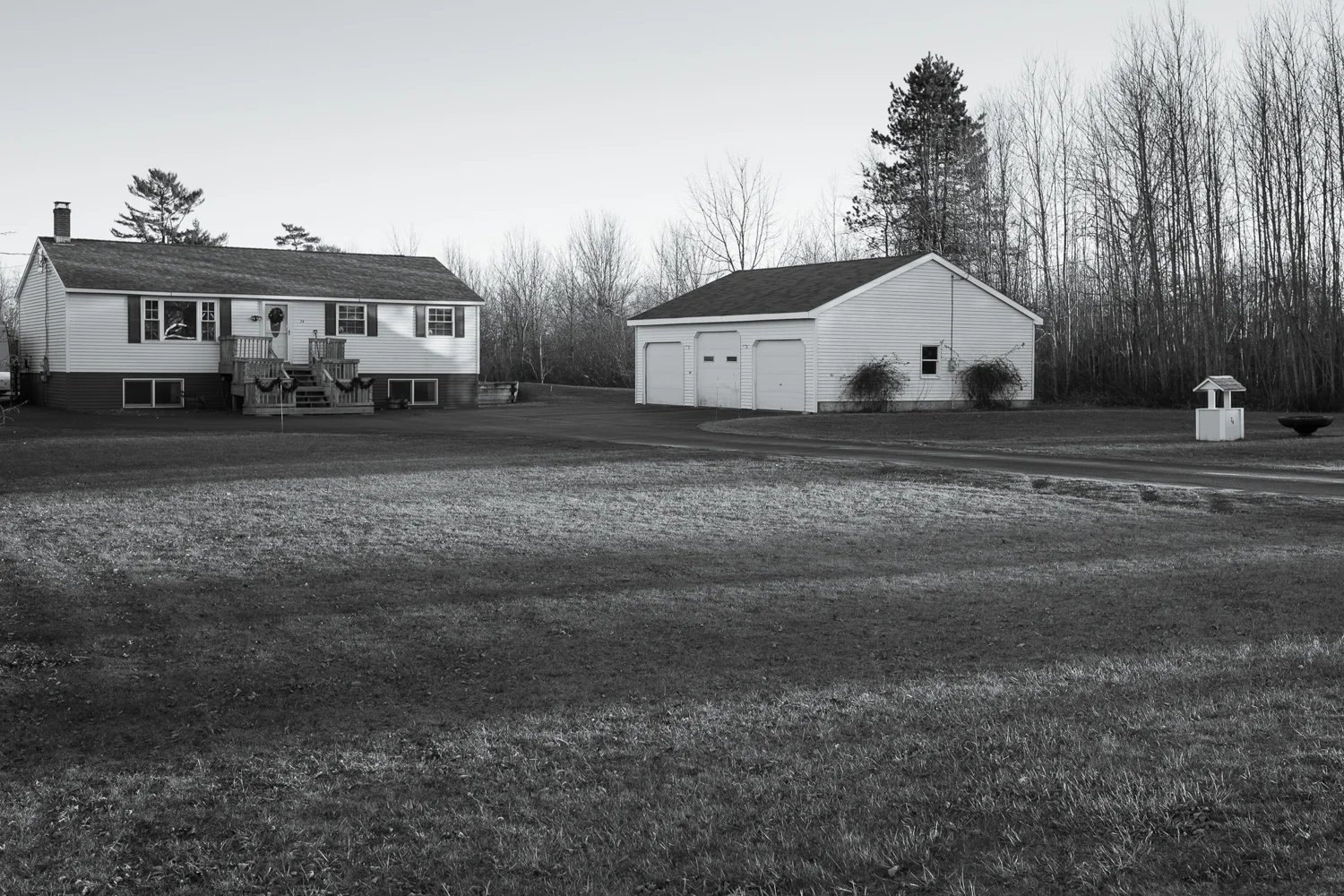




Part 1, A Conception
It's hard for us to understand just how outrageous photography is. We take it for granted, grew up with it all around us - newspapers (except the Wall Street Journal, for many years), magazines (ditto the New Yorker), tv, movies, billboards, family photos, 4 for a quarter (or a buck) photo booths. More than fifty years later I still have a miscellaneous drawer with a few high school graduation photos on stiff, deckled-edge glossy paper with juvenile but sincere-at-the-moment notations on the back in time-blurred blue ink. Somewhere, some forgotten classmate has mine tucked away for no good reason other than the fact that it is a photograph, and therefore carries meaning and a shared history, and has a physical tie to some sort of truth.
Vilem Flusser, in Towards a Philosophy of Photography (Reacktion Books, 2000) claims the two most important stages in human cultural development are the inventions of writing (linear and one dimensional) and photography (non-linear and two dimensional). While writing can render the mental impressions of the second, third and fourth dimensions - "Once upon a time there was a castle, dark and gloomy", that mental picture is unique to each of us. With photography, the third dimension is rendered accurately, believably, according to the laws of visual perspective as applied by the brain, and is shareable across cultural and language barriers. Implications of the fourth dimension, time, are accomplished through visual clues - a sense of the contemporary, past, or future. Although assessments of the clues may differ, the boundary poles around which those differences swing are more limited than in oral or written communication.
For Flusser, the photograph is the first 'technical' image, where a technical image is made not by a tool (ink, chisel) that transfers the maker's intent, but by an apparatus (camera, photo establishment) which does not. He thinks of a 'tool' as something that has not had much input of energy in its making that it can in turn impart to its product. A piece of graphite with a point, a split quill and ink, a few strands of camel's hair tied to a stick and paint, shovel blade and handle; tools have minor energy input and are simple enough that they transmit the user's motion, intent. Contrarily, an 'apparatus', i.e. a camera, a pantograph, an electric typewriter, a back hoe, a four color press, are all complex enough, have enough thought, calculation, and energy inputs behind and inside them, that they leave their own marks, overriding or disguising their users'.
Unlike a tool, an apparatus changes the way we see/view the world according to its own rules. Photography, this change, this break in the history of perceiving, interpreting, and preserving the world, can only be compared to the invention of writing in its magnitude.
After its invention photography (both still and motion pictures), overtook writing and quickly became the dominant means of understanding, transmitting, and preserving reality; a domination that lasted into the 1980s when physical + integrated circuit technology began to stand next to and challenge the purely physical + chemical. About 140 years, a good, long run for something so complex (lasting longer than steam engines, about the same as the land line telephone). The change? The broken tie to reality, the capital-T Truth, the thing I didn't realize for years that I had fallen in love with.
For as long as the human input component effectively ended the moment of exposure — choosing the subject, arranging the scene, setting up the camera, making the exposure — and then afterward simply choosing the best print made within the limits of the technology, the majority of image making was a right or wrong chemical process, some variation around the understood rules of “classical modernist” printing; more or less difficult depending on the circumstances and the operator. Attachment to reality was guaranteed by the laws of optics and the determinative nature of chemical reactions. There didn't seem to be anyplace for human manipulation that wasn't obvious, so the photograph was a 'perfectly honest' rendition (repetition, re-creation, third generation of the Platonic ideal) of the real world, and could be believed, even trusted. I remember as a young teen in the late 1950s the surprise at seeing on tv news, another trusted, shared, authoritative, but still magical technology, that people were somehow removed from Soviet leadership photos. The implications were existential (for the removee, at least), though that was not a word I knew then.
However, in Flusser's words and in other, mainly French philosophers' of the Modernist/Post-Modern tectonic divide, the apparent simplicity and truthfulness of the photograph belied the multiplicity of ways a photo could be 'decoded'. Too many choices equals no choice at all. A non-mechanical image is easy to decode because it always carries the maker's will, which can be derived by a skilled reader/viewer. But a mechanical image, from an apparatus like the photo system, impresses its own "look", its requirements and limitations on an image — format, scale, syntax, that a photo system user (and viewer) must accept as being beyond the nominal hand of the maker.
Clarification: an apparatus (e.g. a camera) is a complex substitute for a tool, it encodes more information and limits or removes that imprint of the user. A system (e.g. capital-P Photography) is the supporting universe surrounding an apparatus - manufacturing, marketing, engineering, etc. for all of the components including translation and understanding.
In the mid 1980s (Flusser wrote in the 1970s - 80s) when I am at Xerox working on the readability of digital type fonts, digitization comes to the photographic print. I saw a 16 x 20 digital print at Xerox’s research center in Webster, NY — perfect, except for the machine's $250,000 estimated price tag. I would like to say I understood the implications, but all I can honestly say is that the memory of seeing it for a couple of minutes has stayed with me strongly. Something in me understood something, but not in a language I yet spoke.
In some ways digitization is nothing new to photography — then the image was broken up and encoded across small similar pieces of silver halide on a flexible substrate, now the image is broken up over small identical sensors on a silicon chip. If the reassembly and output were fully automated and untouchable, who would care? But it isn't. The computer applications that now sit in the middle are designed to allow people to get inside the image and give them unprecedented tools with which to play. And play we do.
Enough play, or just the ability to play - to break and reassemble, to add and subtract - and we can no longer have confidence in the degree of relationship between image and reality. We can't count on the photograph anymore. We are left standing at the edge of interpretation without our trusty GPS.
I came back to this page, at "trusty map" after a few minutes break, during which the thought hit me that I was wasting my time, that no one after Gen-X will worry about that. They, you, are/did/will grow up without those suppositions, that floor level assumption of visual integrity. The photograph is a way of making pictures, and pictures are bent and shaped by will and intent. It's why Plato would never accept them as equal to the real world object, let alone the ideal Object. But he might just have considered them superior to the hand drawn replication.
Then who does care? Who is still knocked out by this change? By this loss of innocence? Me for one, and I think a lot of photographers and viewers of photographs alive at both ends of the time when the technological change struck at the photograph’s realistic, artistic, photographic, philosophical prime.
At this moment (1st draft August, 2015, 2nd draft February, 2016, 3rd draft April, 2016, fourth draft July 2016) I'm 70. I took my first photos in 1964 in the American West, of scenery. Although I learned from them my first serious photographs were made maybe six years later as an art major, in my final 3-4 years as an undergraduate.
At Cranbrook I did my MFA with film and an enlarger, and at RIT studied photochemistry in its last dominant days, although we didn't 100% know that yet (1983-85). The debuts of the Apple E, IBM PC, and Dec Rainbow were contemporaneous, and programming mathematical formulae in Fortran and Pascal were required.
From my point of view digital cameras evolved slowly and uselessly, concentrated at the unaffordable highest end and the disappointing lowest end. My first digital camera combined the worst of both ends: It was a Leica, but only 1 megabyte with a Leica brand 64 meg sd card. Over priced and undersexed. (Camera conversation is found in Essay 1:2 Of Six Bags and Eighteen Cameras.)
Makers use tools to make. Tools, hand tools or power, have internal limitations. This is obvious - hammers and screwdrivers are not interchangeable. Each's limitations and therefore usefulness are functions of a small number of design and material choices. Systems, like Photography; apparatuses, like a camera, impose large numbers of restrictions on their users in exchange for producing complex products. They are able to make many complex decisions with very little or no input from users, but on the other hand, they are painful to override. Where intent and will are decodable in the products of tools, they are more difficult, even impossible, to decode in the products of systems/apparatuses.
“I only wanted Uncle Vern standing by his new car (a Hudson) on a clear day. I got him and the car. I also got a bit of Aunt Mary’s laundry and Beau Jack, the dog, peeing on a fence, and a row of potted tuberous begonias on the porch and seventy-eight trees and a million pebbles in the driveway and more. It’s a generous medium, photography.”
But I drift. In the nineteenth century, the job of the photographer was to record with accuracy. The job of the photograph was to make a permanent, portable, affordable likeness, a simulacrum, a copy or record of the truth of something specific at some place and time. The face of someone going off to war, or to the grave; a man and woman now joined; a building or horse owned; a field of war dead.
As they became easier and cheaper to make, photographs memorialized more trivial things and events (rarity is a function of cost, cost is a function of rarity). A family gathering for some reason or none, new clothes or cars, both average news and catastrophes. Times and things thought worthy, if just for a moment.
Today there's no change in reason, only in what is thought worthy - increased convenience and lower cost make for a lowering bar. Me, here. Me, with him. My lunch. Something that is mine. Something shiny that attracted my Crow brain.
Triviality and importance are functions of perspective. Perspective can be a function of cost.
I'm not a social media guy. One night at dinner I came close to a fight with an 80+ friend over him enthusing to me that if I just gave in to a smartphone, it would liberate me. From what, he couldn't quite say, other than never missing anything. I just thought he sounded like either a junkie or a late entrant in a Ponzi scheme begging me to invest every cent so he could get some of his back.
40,000,000 photos are posted on Instagram each day, 350,000,000 on Facebook (4,050) per second). What am I missing? I am on neither, follow no one, tweet to none, an unreliable. Not real without pix.
I have opted out, thus ceasing to exist even before I cease to exist. Worse, janrosenbaum.com, now supposedly down but still there floating around like a ghost pirate ship, was made in Flash, which is now officially over. I am on a one-speed Schwinn in the Tour d'France.
I think my pictures are more interesting than most. More than the vast majority. More than yours. If you want to be an artist, you have to have an ego.
Sorry, back on course: The place of photography today, how that differs in kind as well as degree from its place yesterday. I think that sheer numbers have altered the effect by more than just quantity. Average quality is way up in technical terms (focus, exposure), but down in quality of interest. But it has been rising and falling in those ways with every improvement time or cost since the Daguerreotype.
Price and difficulty sharpen judgment. We look more and shoot less if there's a penalty involved - like film to develop; contacts to make; editing to do; film, paper, and chemistry to buy, use, store. Digital is not free, but it seems seductively so with its cost measured instead in time. Time needed to edit, delete, organize. And there is also the cost in committing to a particular software for your organizing, or the time to learn another. If only there were fifty ways to leave Adobe.
Part 2, Other trains of thought: an addition
I am, apparently, a bit too old or a bit too dull, to have tunneled under the obvious and continued on my way when thinking about photography and culture. Lived the past and the present, missed the obvious next.
So I thank Stephen Mayes and Time magazine for his August 25, 2015, essay "The Next Revolution in Photography is Coming".
Stephen's ideas and quotations, my comments. Go read the essay first, I'll wait here.
What we think of traditionally as a photograph isn't quite dead, but has left the building. The Elvis reference isn't simply cute, it's metaphorically accurate (and is Mayes’). Just as Ed Sullivan’s Elvis was the Elvis of basic rock and roll + uncivilized sex, my photography is the “straight, raw" photograph. Once Stieglitz got us past our misplaced painterly aspirations, and Modernism developed its philosophical base of every medium to its strengths, the photograph fit more securely into its role in a System, as an apparatus, where the image code is (was) locked in a silver matrix, alone and away from the interferences of other systems and codes. It was, for better or worse, ordinarily isolated from distraction and influences outside of its own home apparatus.
It held, still, this
optical connection with reality, that physical relationship between the object photographed and the image that differentiated lens-made imagery and defined our understanding of photography for 160 years.
But Mayes is mistaken when he calls it the optical connection - digital uses optics the same way; rather, it is the silver halide (AgX) connection that ties photography to reality. This is a closed codec (coder, decoder). When used, it is difficult and unpredictable to alter the basic stored/retrieved information. Small facets can be changed e.g. color, contrast, solarization, defocus, but not the Truth-basics. A house, sky, a car, a Soviet general remain a house, sky, a car, a Soviet general without a lot of specialized hand work. Coding/decoding are done by chemical and physical processes to the photons' energy, which is information about where it has been (reflected from an object) tied up, gathered, organized, stored as potential energy in the jumped orbits of electrons and then presented by the laws of physics (optics division) and the electrochemistry of molecular silver. Example - a brick is sand and cement with information added in the shaping thru the expenditure of energy. Erosion is the release of that information and energy back to the universe as the brick falls apart unto sand and cement. It is not coincidence that the word decay is also associated with radioactive materials aging out of (energy-possessing) existence.
But a digital sensor replaces silver halides with man-made, information holding, silicon-something that measures the strength of light striking and records a digit value.
• The photons were made in the light source as energy-excited (probably from heat energy) electrons jumped to new levels. Photons (light as wave/particles) are released when the electrons are pulled back to their previous level again by the atom's nucleus' electromagnetic force.
• The information/energy deposited in the lens during its design and manufacturing shapes the photons (energy) into organized information.
• The silicon counts/absorbs/converts photons into electrical energy (voltage) now with spatial information based on the particular cell's position in the array.
• This information is then "written to" the SD card and transferred to your computer by magic. (Arthur C. Clarke's 3rd law: "Any sufficiently advanced technology is indistinguishable from magic.")
That voltage is recorded as a fractional measure of the total none-to-wash out brightness levels, translated into a scale based on a computer friendly power of two, binary, on-off, presence/absence. The code is no longer held in information-enriched molecules of AgX, dependent on chemistry for its release. It is in numbers - a great universal human construct that is independent of reality, pure, and responsible only to mathematics. It's as if the AgX could have stored the number of photon strikes directly on millions of tiny, tiny abaci.
One of the essential qualities of numbers is that they are precocious, they'll play with other numbers without hesitation or shame.
Mayes seems amazed that digital cameras toss out ⅔ of the possible information and interpolate what's lost when the jpg is written or the RAW file is opened. I think his worry might be that some essential, irreducible touchstone to reality is being lost and that falsehoods are being introduced.
Its both worse and better than Mayes fears. Worse because cameras actually toss much more than ⅔ of what's out there away. The way most sensors work is to have a single layer of pixel cells (from PICture ELement, but picle would be too funny for something so momentous), each is sensitive to every color of light. They are covered by a filter of red, green, and blue glasses in a specific pattern that substitutes for human vision, which is much sensitive more to shades of green than of other colors. Each cell sees only the light the color of the filter while absorbing (blocking) other colors. Foveon sensors, used in Sigma cameras (and now owned by them), is the only commercially available three layer sensor that separates and records light the way color film does - in R, B, and G sensitive layers, one atop the other. It's a subtly great system -- I love my DP-1 and DP-2 -- but hard to market to people with limited attention spans and a fear of math. But either way, the smooth spectra of hue, lightness, and saturation are digitized - cut into discrete bundles and represented by integers.
Some information is lost in systems which depend on a single layer and tricolored filter, but other information is lost because pixels are discrete and the same across their dimensions, but the world is smoothly changing. For a given size sensor, the size of each pixel depends on how many there are - more but smaller pixels, less missing data, but poorer light response quality; or fewer but larger pixels, better quality but more missing transition information.
Does any of this provide cause for worry? Not really, not on a human scale. In the late 1940s, Claude Shannon, working at Bell Labs, published a number of papers on what is today called information theory. He died before anyone realized how much he deserved a Nobel prize. But he described, incorporating earlier work by Harry Nyquist, the theory by which we know how often we need to sample a continuous streak of data in order to save it digitally and later reconstruct it without perceptible error. How to digitize, what’s the minimum to get the maximum. He's the Man.
(Aside: the 2016 Kentucky Derby winner, Nyquist, was named for a Detroit Red Wing hockey player, not for one of the founders of the digital world. I'm a Red Wing fan, but I was hoping . . . )
Mayes again:
For obvious commercial reasons camera manufacturers are careful to reconstruct the digital image in a form that mimics the familiar old photograph and consumers barely noticed a difference in the resulting image, but there are very few limitations on how the raw data could be handled and reality could be reconstructed in any number of ways. For as long as there's an approximate consensus on what reality should look like we retain a fingernail grip on the belief in the image as an objective record. But forces beyond photography and traditional publishing are already on to this new data resource, and culture will move with it whether photographers choose to or not.
WTF, right?
What he's beating about the bush about is simple but staggering: photographic information is now coded as numbers rather than in the movement of silver electrons. Each piece, each pixel has enough numbers to cover 2-D (sooner or later or right now 3-D) spatial coordinates for (at the moment) a rectangle, and a set of three digits, each a power of 2 (currently ranging from zero to 4096) specifying hue, saturation, and lightness. Five integers (at the moment) tell you where the element goes and what it looks like (Two inches from the left, 1.5 from the top, sky blue with a touch of sunset orange, PANTONE™ xyz). And since they're integers, you can do interesting stuff to them quickly and painlessly. Welcome to computational photography. One of his examples, piling weather data into a photo, is a simple programming exercise.
Mayes:
And so it is that we find ourselves in a world where the digital image is almost infinitely flexible, a vessel for immeasurable volumes of information, operating in multiple dimensions and integrated into apps and technologies with purposes yet to be imagined.
If the image making moves from the camera, which carries the physics (and chemistry) into the field, to the computational kernel, the math, then, if we wish to retain some historical comfort level with at least the language (that's why Photoshop offers, or used to offer, tools for dodging, burning, and vignette), then perhaps the definition of camera needs to change from its 'dark room' orientation — camera obscura — to the suite of sensors and software that replace that single thought. More pictures are taken with smartphones, certainly more pictures are distributed by smartphones, than by single-function 'cameras'. If a newly defined "multigraph" is the result of gathering and organizing data (not limited to just data from light rays) and displaying it visibly, then the smartphone's lens/sensor, GPS, thermometer, accelerometer, inclinometer, compass, phone numbers, facial and fingerprint recognition, etc. could combine their data into a visual experience that encompasses and supersedes -our experience of the photograph.
But why be limited to sensors that provide the here and now? Smartphones are also connected to the internet, that notoriously large basket of everything, and all of it already in handy numeric format. Shooting vacation pics at Gettysburg? Why not swoop Abe in there, one arm around the kids? Are you a teacher vacationing at Verdun? Add troop formations, directions of movement, the correct weather, and a snippet of Ken Burn's music to your still or motion multigraphs (or smartgraphs). Integers play well with other integers.
There is no limit, and if there is, it will be surpassed tomorrow. And if there is no limit, then there is no proper definition because definitions provide boundaries - what something isn't.
Google: Definition of definition:
1. A statement of the exact meaning . . .
2. The degree of distinctness in outline of an object, image, or sound, especially of an image in a photograph or on a screen. . .
Just as cable hasn't displaced TV, and TV did not displace movies, and movies did not displace radio and radio did not displace books, the multigraph will not displace the photograph. My generation will fight to hold onto it out of fear of the unknown and the exhaustion of trudging up learning curves. The next generation will forget the photograph. The following generation will rediscover it, probably classify it as an alternative or historic process, and at some point, a balance will be found.
The importance of digital isn’t that we can instantly let everyone know what the shrimp scampi looked like; the importance, the power of digital lies in the numbers. Numbers are manipulable, pixels are flexible. The sandbox has been enlarged.
Where photography and digital have had their most rewarding intersection (to me, right now), is in of all places, the troublesome middle of historic photographic printing processes. I wonder if there’s another case of a replacement reaching back to give CPR to the replaced? Did moveable type benefit the hand copied manuscript? Did TV increase the appeal of radio? Did Bic lead to a revival of quills?
Think of digital not as a technology, but as a methodology. Sample properly (follow Shannon's Law: use no more than just enough digital divisions), and both sound and light can be translated into beautiful, simple whole numbers the brain can fill in instead of endless decimal laden analog responses. Brains deal quite well with analogue, but people (and their inventions) aren’t as smart as their brains. And they don't have to be.
Aside: Yes, that statement about translation isn't entirely accurate. Many will holler, rightly but pointlessly, that analog sound and pictures are better quality than their digital versions. Right because there are analog artifacts in each medium that we have come to expect and even love. The digital versions have different artifacts, and we choose to see them as flaws. But where digital processes are designed to be as good as the eye or ear, but not better (Shannon again), and if machines can tell that silver and vinyl carry more detail, but that detail is beyond the perception thresholds of just about everyone, who cares? Get used to it. The good shouldn't be punished by the 'perfect'. End Aside
Historic negative/positive photographic processes typically aren’t sensitive enough on the positive end to allow direct enlargement from the negative. Every negative had to be contact printed — positive the same size as negative.
To make an enlargement, an enlarged (copy) negative has to be made either from a contact film positive enlarged into a film negative, or a enlarged film positive contacted on film to make negative. From my own brief experience this is a painful, dust laden path that is less creative and more labor intensive than what came before the original and what comes after it, the final product. Why would anyone do this voluntarily? It can and it has put potential students off their feed and sent them running back to rolled film and silver halide papers where enlarging is comparatively easy.
Tillman Crane, a platinum and palladium (Pt & Pd) printer for 25 + years, quit photojournalism to do his personal work, which involves large format film cameras, hand coated papers, and lots of darkroom time. He and others have adapted digital strategies in two phases of their work. Aware of digital around the time newspapers began using and thinking about it, Tillman saw the possibilities of using it for enlarged negatives, but for a long time the techniques hadn't been worked out well enough to be even just as good as the enlarged negatives he was already making, let alone better. As an 8x10 and 5x12 camera user, contact Pt/Pd prints were his most common output, with larger prints made from contact printed enlarged positives. There was no other high quality option until around 2006-07 when he began to see digital negatives enlarged onto Pictorico transparent material using Epson photo printers and high resolution drum scanned original negatives. They were as good as his film to film to film process. The quality of material and of enhanced math tools made the tipping point for Tillman and his cohort of alternative process print makers. Digital scans properly prepared in the computer are as good as anyone’s hand made enlarged negatives, without the dust problems, drying and storage space needs, and the fragility of film emulsion. There are undoubtedly more people now working in alternative processes than there ever were, with none of their creativity compromised.
The other area where Tillman has integrated digital technologies into his practice is in shooting. Not that he’s given up sheet film, but he’s introduced a digital camerain the middle of his shooting and teaching workflows.
Like many artists in many media, Tillman teaches workshops. Advanced workshops usually attract students interested in the teacher’s methods and philosophy. For Tillman's students, that means large format cameras in natural light. But he often carried a digital point and shoot for record photos. Sometime in 2010 or 2011 a student’s digital camera a with ‘live view’ image from the lens onto the back screen attracted his interest. Here the coincidences of the universe took over: Though a photojournalist for years, Tillman never met an SLR he liked because he is left-eyed. (Only one 35mm SLR that I know, the long deceased Alpa from Switzerland was designed for left handed, left eyed users.) Overcoming his brain's natural bias meant closing that eye, which in turn meant things and people could sneak up quickly on or into him in a busy news event.
‘Live view’ looks and acts like a small ground glass that can be used for precise composition, though without swings and tilts. So now a digital camera could be a useful tool for framing and testing shots. Finding the Fujifilm XPro-1 with Fuji’s delicious lenses meant the camera might also take pictures good enough for Pt/Pd darkroom time. The flexibility of digital as a methodology puts it right in the middle of Tillman’s creativity stream both at the site and in the darkroom without compromising his standards anywhere.
The infinite flexibility that makes Mayes’ mouth water was on display unexpectedly one night in Rockland, Maine. I went to an joint exhibit of two people, one, Sarah Szwajkos (just skip pronouncing every other consonant) is a fine photographer, working in sheet and medium formats; the other person, Nathan Davis, isn’t a photographer at all. What I thought was going to be an exhibit of two sets of images turned out to be Nathan’s computer's raga on scans of Sarah’s images. He applied an algorithm to each file. The resulting images, printed, framed, and hung on the walls of his house, were often inaccessible to the eye, but showed me one way photography can intersect with computers, or actually with computation.
Nate changed the algorithm slightly for each image. None of the changes or the algorithms had anything to do with the image content, and neither did the result.
To a computer, the Mona Lisa is equal to the Instagram posting of your spinach quiche — it’s a bunch of pixel descriptions of hue, saturation, lightness and x,y positioning on a flexibly-sized grid. Hue, saturation, brightness, and location. What else really matters? What it is a picture of is not only unimportant to the process at hand, it is unfathomable to the computer (face recognition aside).
Basically, Nate's algorithm picks one pixel at random from the pile of possible pixels, and sequesters it after learning its H, S, B, & L information. Now the computer goes searching for the pixel that most closely matches the first pixel within a set radius. It draws a line the H, S, & B of the second pixel between them, and then starts from that pixel. The game repeats until there are no remaining pixels within the radius.
Since “the most closely matching pixel” means the line color changes each time based on image information, but only for color and location, not for 'content'. It’s like finding a map coordinate but not caring what map you're looking at.
As given, the "photos" are then printed on top of a print of the original, but that's not necessary. The print is a mixed bag of any remaining content and colored lines, sometimes so dense that the original is not readable, but that’s just a whim of the algorithm setting. The resulting multigraphs aren’t bound by any photographic traditions or conditions. They are free to float or sink, may be independent objects, may be a transitional state in an ongoing, undirected process.
Nate - try both the Mona Lisa and someone’s lunch pix and see which is more beautiful.